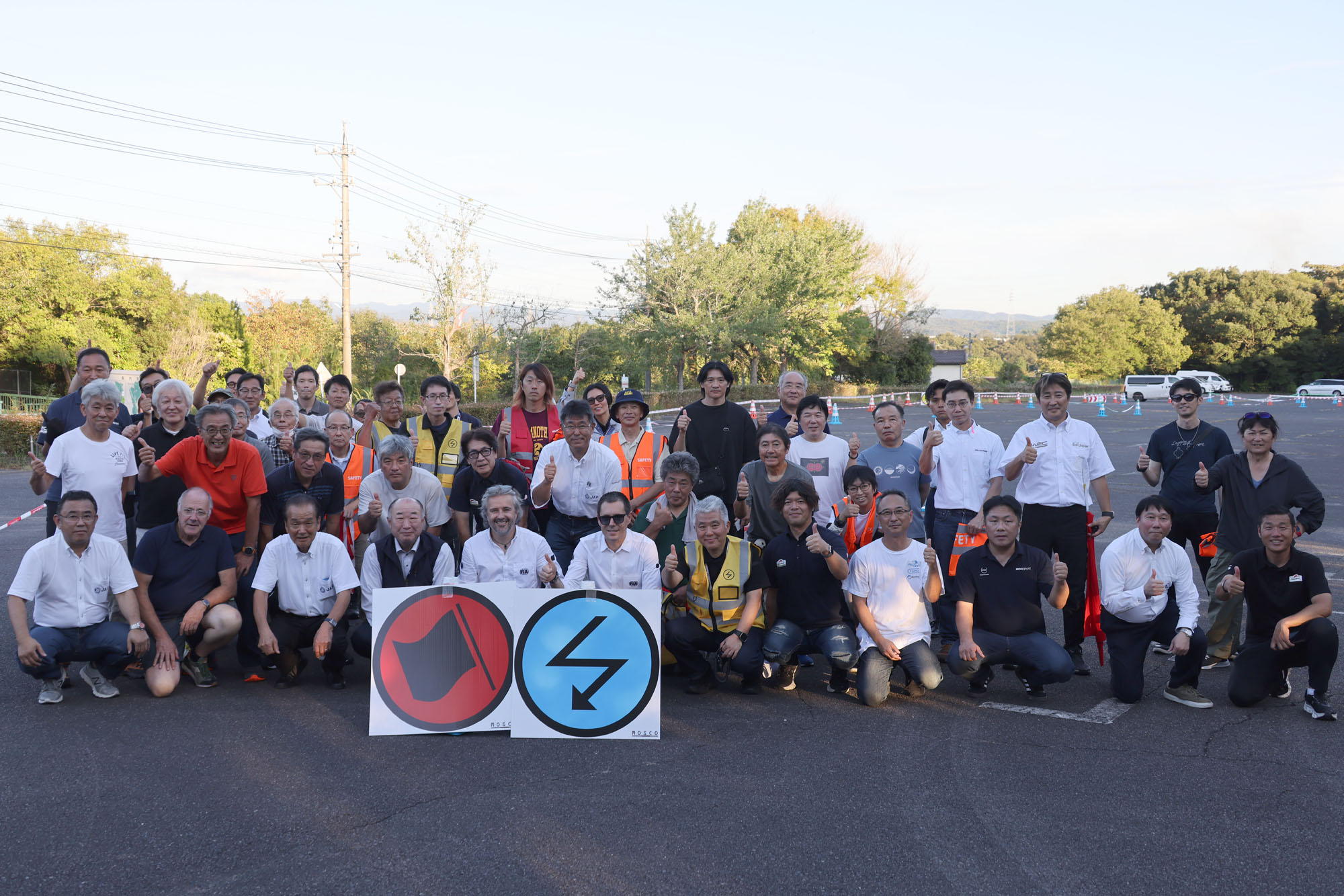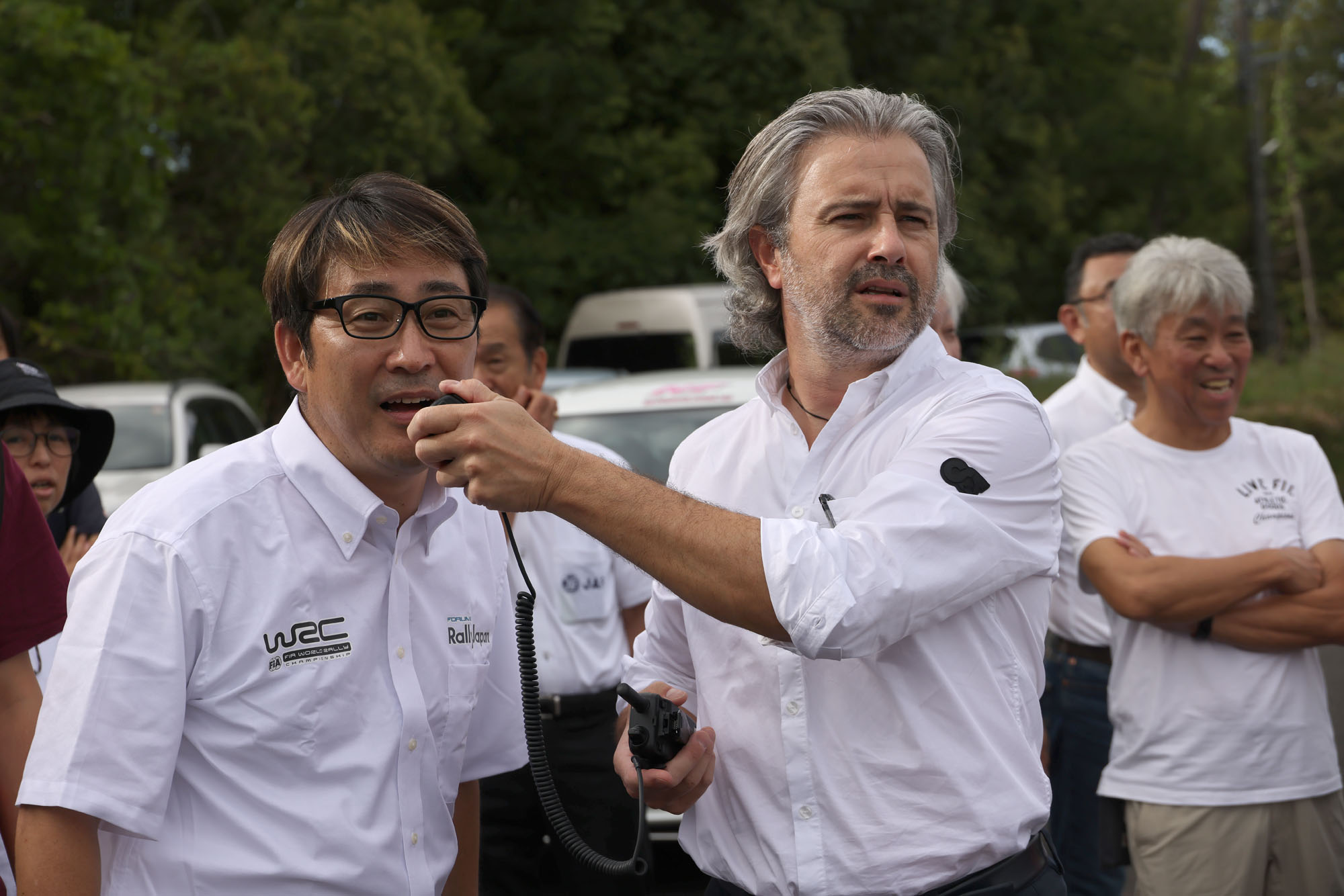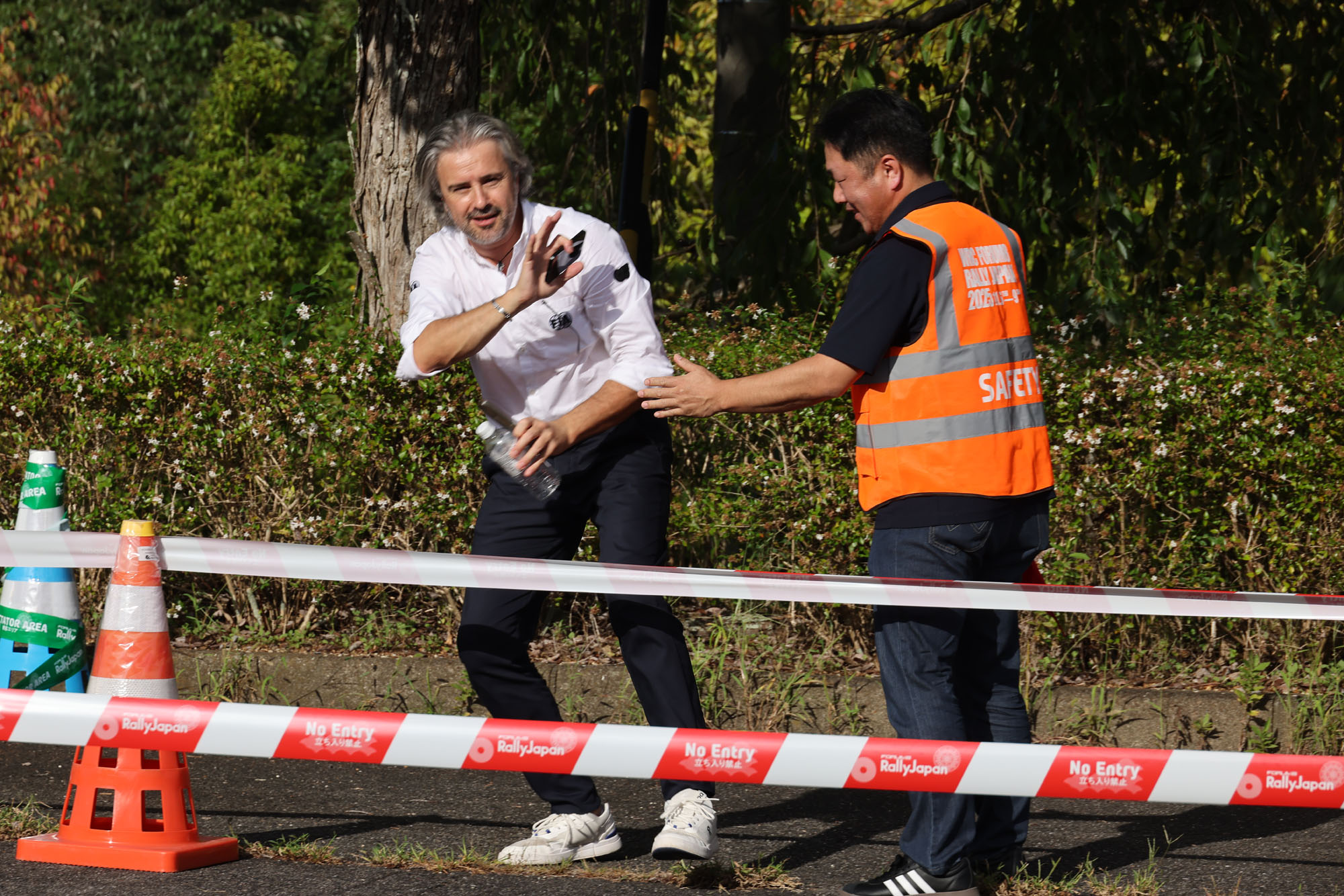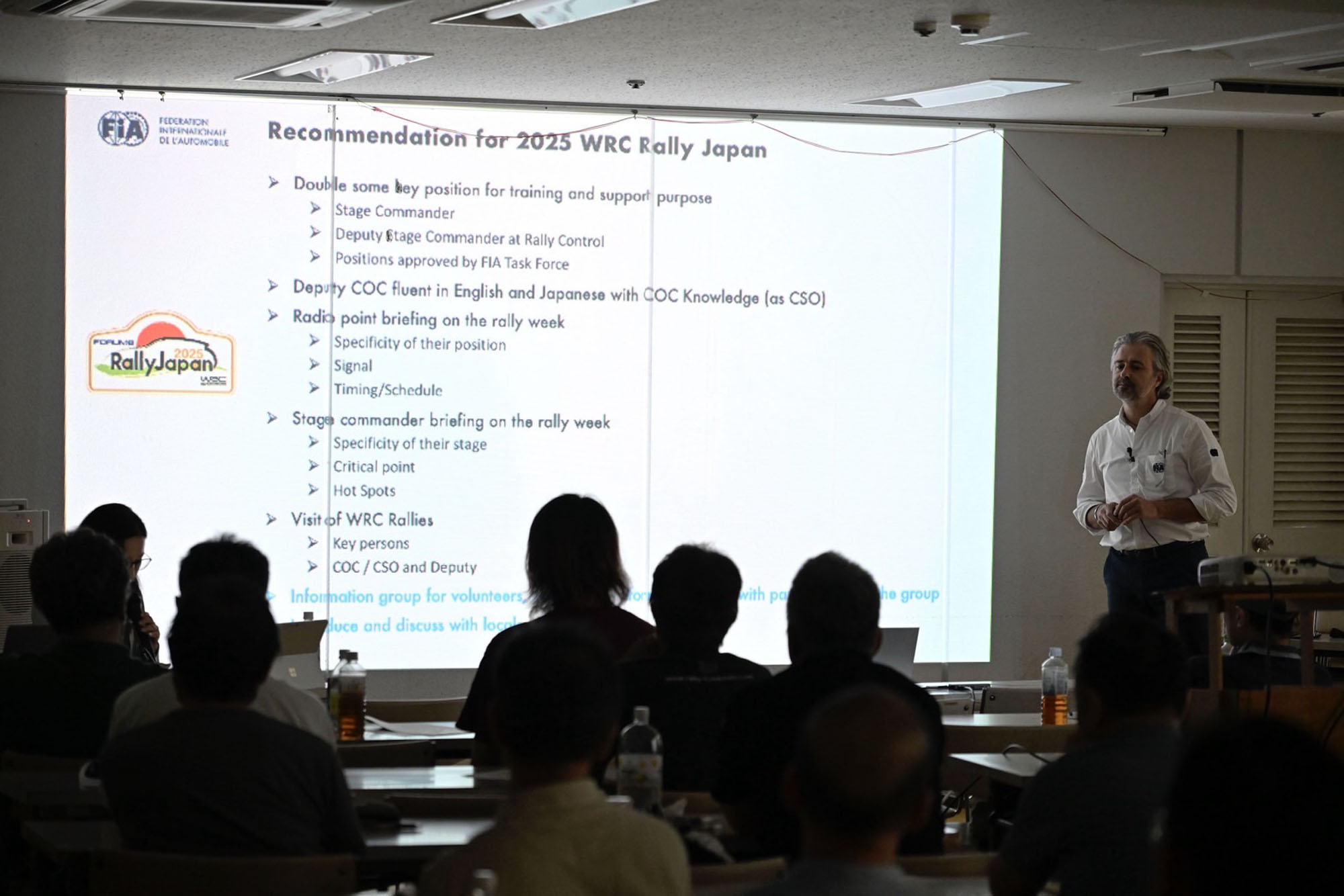From September 25 (Thursday) to 27 (Saturday), 2025, in Toyota City, Aichi Prefecture, the FIA (Fédération Internationale de l’Automobile)/JAF (Japan Automobile Federation) hosted a three-day “Marshal Training” session for competition officials. The 61 participants included competition officials/marshals holding JAF-certified officiating qualifications and marshal supporters (formerly known as official competition volunteers).


The participants were predominantly veteran officials who regularly serve as competition officials and marshals at the All Japan Rally Championship and regional championships. Also present were marshal supporters who work alongside these competition officials on the day of events. The seminar was conducted in two parts: morning classroom instruction and practical training using the facility’s parking lot. The main instructor was Mr. Nicolas Klinger, FIA WRC Safety Delegate (Safety Officer), with supervision by Mr. Koichi Murata, Head of the JAF Motorsports Department. This initiative was undertaken to ensure safe event operations and prevent recurrence of the incident during Rally Japan 2024, where a private vehicle breached restricted lines and disrupted the competition. The FIA formed a task force to implement safety measures.
The classroom session covered key topics including the division of responsibilities and duties for WRC event safety, confirmation of the chain of command, and communication between competition officials and marshals. This was followed by a thorough review of the roles within the safety convoy (Triple Zero, Double Zero, FIA Safety Delegate, Zero Car, Sweeper, etc.) responsible for securing the actual special stage, with extensive Q&A. During the afternoon field training, the SS course was recreated using pylons and regulation tape. Competition officials, marshals, and marshal supporters were positioned at each radio point and spectator point. Following the safety convoy, vehicles simulating competition cars were driven through the course. Training focused on how to respond to unforeseen incidents occurring at various points and how to communicate with the chain of command. Mr. Nicolas Klinger and Manager Murata enthusiastically played the role of fans, creating unsafe situations by leaning over barrier tape or crossing the course, then commenting on the trainees’ responses. Even the marshals, well-versed in rally competition, initially showed some hesitation and reserved responses. However, with each repetition, their movements and communications became smoother, making it truly realistic training. Toward the end, actors suddenly appeared from the bushes as spectators and as residents riding bicycles against the flow of traffic on the course. Each time, the marshals responded swiftly.
Mr. Nicolas Klinger stated, “Today was training, but everything that happened here is exactly what could occur during Rally Week. However, during the actual event, marshals won’t always see a problem when it arises. That’s precisely why it’s crucial to verify each procedure and safety caravan, and for the stage commander and rally control to understand the events that occur. It’s especially important to have sufficient marshals stationed at spectator points. There are all kinds of spectators. It’s difficult to predict how they might behave. While Japan has a culture of respecting others, some rally spectators might not. If an unforeseen situation arises in your assigned area, don’t hesitate to ask for help.”
Hirokazu Somemiya, Safety Officer for Rally Japan, stated, “Today we created a simple course for simulation purposes. Participants might have initially approached it like a game, but these traps are very real possibilities. Watching them, I was quite nervous—wondering what would happen if this actually occurred. However, as they got used to it, their responses steadily improved. I truly feel that conducting simulations like this directly contributes to safety. But it can’t be done overnight, so I hope to gradually raise the level each year.”


